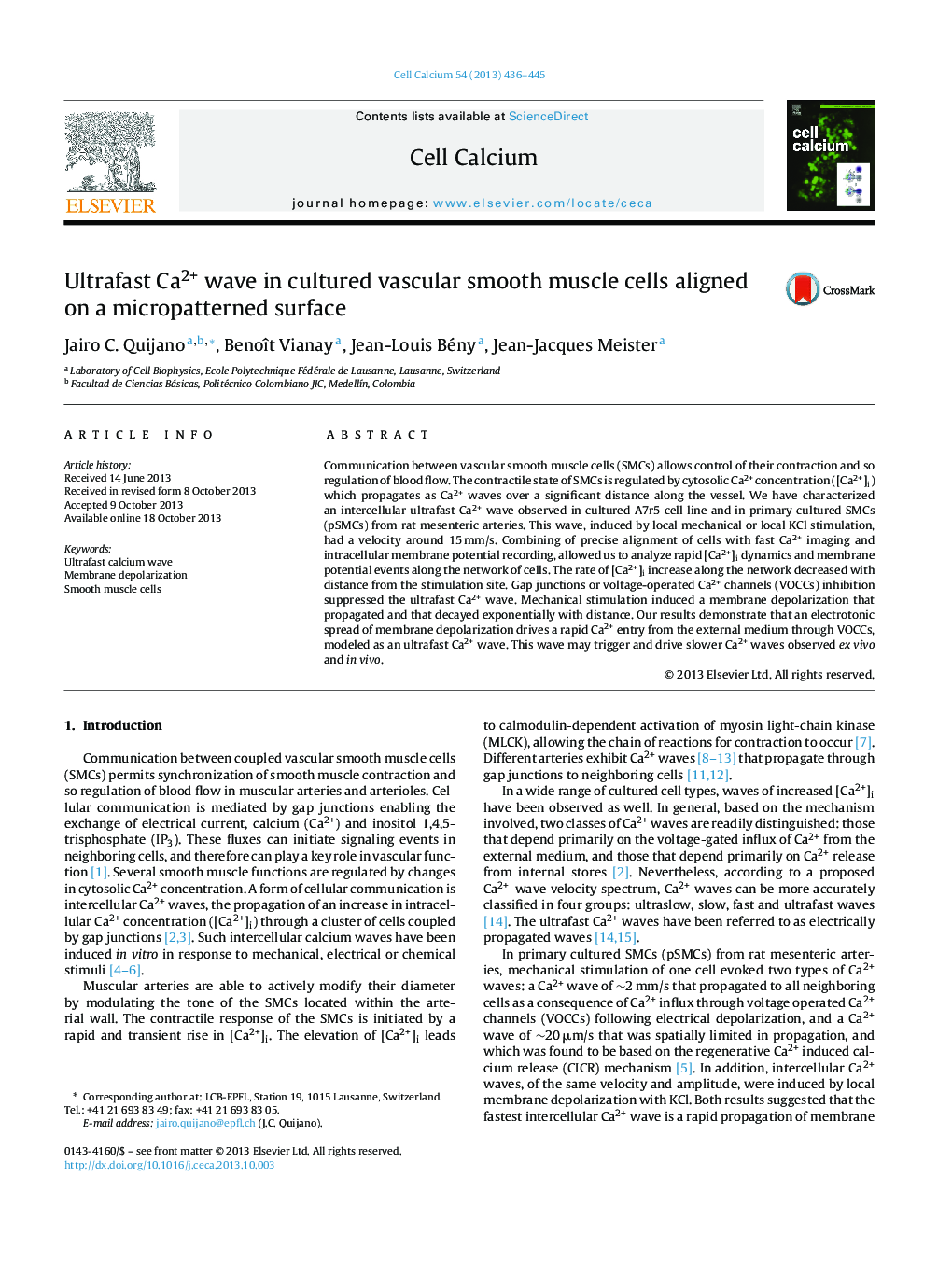| Article ID | Journal | Published Year | Pages | File Type |
|---|---|---|---|---|
| 10926261 | Cell Calcium | 2013 | 10 Pages |
Abstract
Communication between vascular smooth muscle cells (SMCs) allows control of their contraction and so regulation of blood flow. The contractile state of SMCs is regulated by cytosolic Ca2+ concentration ([Ca2+]i) which propagates as Ca2+ waves over a significant distance along the vessel. We have characterized an intercellular ultrafast Ca2+ wave observed in cultured A7r5 cell line and in primary cultured SMCs (pSMCs) from rat mesenteric arteries. This wave, induced by local mechanical or local KCl stimulation, had a velocity around 15Â mm/s. Combining of precise alignment of cells with fast Ca2+ imaging and intracellular membrane potential recording, allowed us to analyze rapid [Ca2+]i dynamics and membrane potential events along the network of cells. The rate of [Ca2+]i increase along the network decreased with distance from the stimulation site. Gap junctions or voltage-operated Ca2+ channels (VOCCs) inhibition suppressed the ultrafast Ca2+ wave. Mechanical stimulation induced a membrane depolarization that propagated and that decayed exponentially with distance. Our results demonstrate that an electrotonic spread of membrane depolarization drives a rapid Ca2+ entry from the external medium through VOCCs, modeled as an ultrafast Ca2+ wave. This wave may trigger and drive slower Ca2+ waves observed ex vivo and in vivo.
Related Topics
Life Sciences
Biochemistry, Genetics and Molecular Biology
Cell Biology
Authors
Jairo C. Quijano, Benoît Vianay, Jean-Louis Bény, Jean-Jacques Meister,
